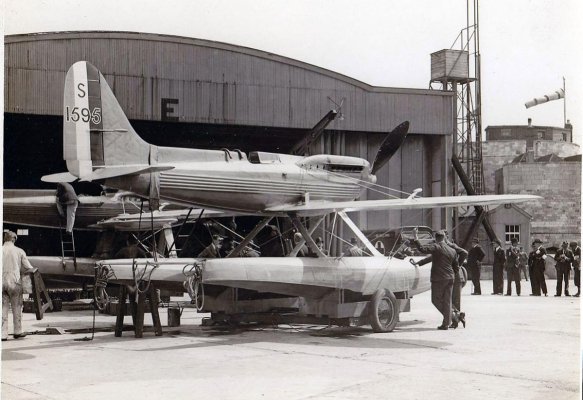dhmeissner
Guru
- Joined
- Sep 26, 2012
- Messages
- 1,569
- Location
- North America
- Vessel Name
- The Promise
- Vessel Make
- Roughwater 35
and Bill Staines fans
https://ouvirmusica.com.br/bill-staines/988994/
Bill Hosie
Bill Hosie built a plane, a survivor from the Schneider Trophy Reign.
He seemed like a nice old guy, with his
baseball cap and his sunlit eyes.
He took the airframe, motor, and wings,
and restored all the fabric, the floats, the
struts and things
And "The Shark on Banana Skis" was set
to roar once more over Cornwall seas. In the "27" Schneider race, it was a
Supermarine that took first place.
The year Bill Hosie was born, there were
still tall ships sailing 'round Cape Horn,
But the S5 Supermarine was the fastest
seaplane the world had ever seen,
Nearly 300 miles an hour with a Napier
Lion engine to give her power.
And her daughters flew in World War
Two, their pilots were known as the first
of the few.
When the Battle of Britain raged, the
Spitfire blazed across a history page,
But Bill Hosie had a dream to haunt the
skys with the ghost of a Supermarine
And she rose on the steppe again with the
spirit of a Schneider Trophy-winning
seaplane.
She took to the cool spring air with Bill
Hosie sitting in the pilot's chair.
She banked along the Cornwall shore, but
her tail broke away and she flew no more.
She flew from her flight of grace the year
they revived the Schneider Trophy Race
And the Supermarine S5 was the plane that
Bill Hosie made feel alive.
Words and music by Archie Fisher
https://ouvirmusica.com.br/bill-staines/988994/
Bill Hosie
Bill Hosie built a plane, a survivor from the Schneider Trophy Reign.
He seemed like a nice old guy, with his
baseball cap and his sunlit eyes.
He took the airframe, motor, and wings,
and restored all the fabric, the floats, the
struts and things
And "The Shark on Banana Skis" was set
to roar once more over Cornwall seas. In the "27" Schneider race, it was a
Supermarine that took first place.
The year Bill Hosie was born, there were
still tall ships sailing 'round Cape Horn,
But the S5 Supermarine was the fastest
seaplane the world had ever seen,
Nearly 300 miles an hour with a Napier
Lion engine to give her power.
And her daughters flew in World War
Two, their pilots were known as the first
of the few.
When the Battle of Britain raged, the
Spitfire blazed across a history page,
But Bill Hosie had a dream to haunt the
skys with the ghost of a Supermarine
And she rose on the steppe again with the
spirit of a Schneider Trophy-winning
seaplane.
She took to the cool spring air with Bill
Hosie sitting in the pilot's chair.
She banked along the Cornwall shore, but
her tail broke away and she flew no more.
She flew from her flight of grace the year
they revived the Schneider Trophy Race
And the Supermarine S5 was the plane that
Bill Hosie made feel alive.
Words and music by Archie Fisher

